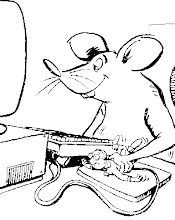Do you trust your original judgement and hope it turns?
Does your fear of being wrong cause you to close it too soon before it does significant damage?
With WMs, last December 2008 on the DOW, was a nightmare. They kept forming on RSI, then Price, then retracing and taking out the base and then reversing again, lovely trade IF ONLY I'd had stayed in a bit longer.
Problem is, how much longer is "reasonable"?
This idea is based upon a specific situation in EWT as posted by SED on the iii UKX board - this is my interpretation & I have added in the WM idea.
Wait for a clear wave1 with 5 wave substructure.
Wait for the wave2, with a clear 3 wave substructure,to retrace at least 38% of the wave1.
Wait for the WM to form on RSI and establish the base level on Price.
Split the trade into chunks so that the S/Ls take into account the base level on Price and at least two of the Fib levels below that for a W.

I realise that the 80% is not a true Fib level but it is the figure use in a lot of EWT research as signifying a boundary between expected and unexpected. As usual the conditions under which the data was collected is very important, as is an understanding of what the researcher means by "unexpected".
With this example I'd split into three chunks and use below the base, below 62% and below 80%.
It increases the cost compared to just using below the base BUT it adds a reasonable amount of extra space. [IMO, never commit more than 2.5% of your bank to any one trade.]
cheers theory

